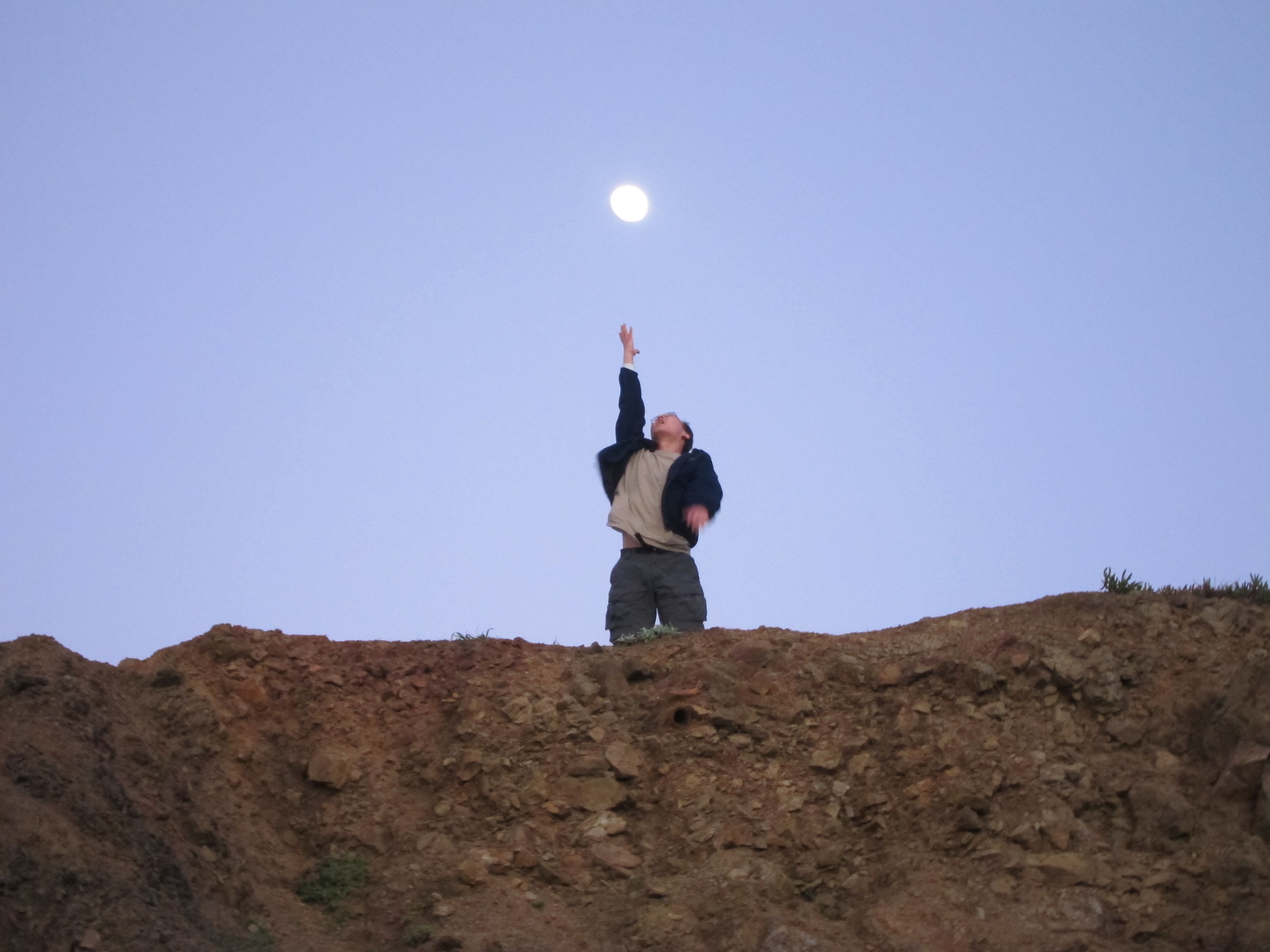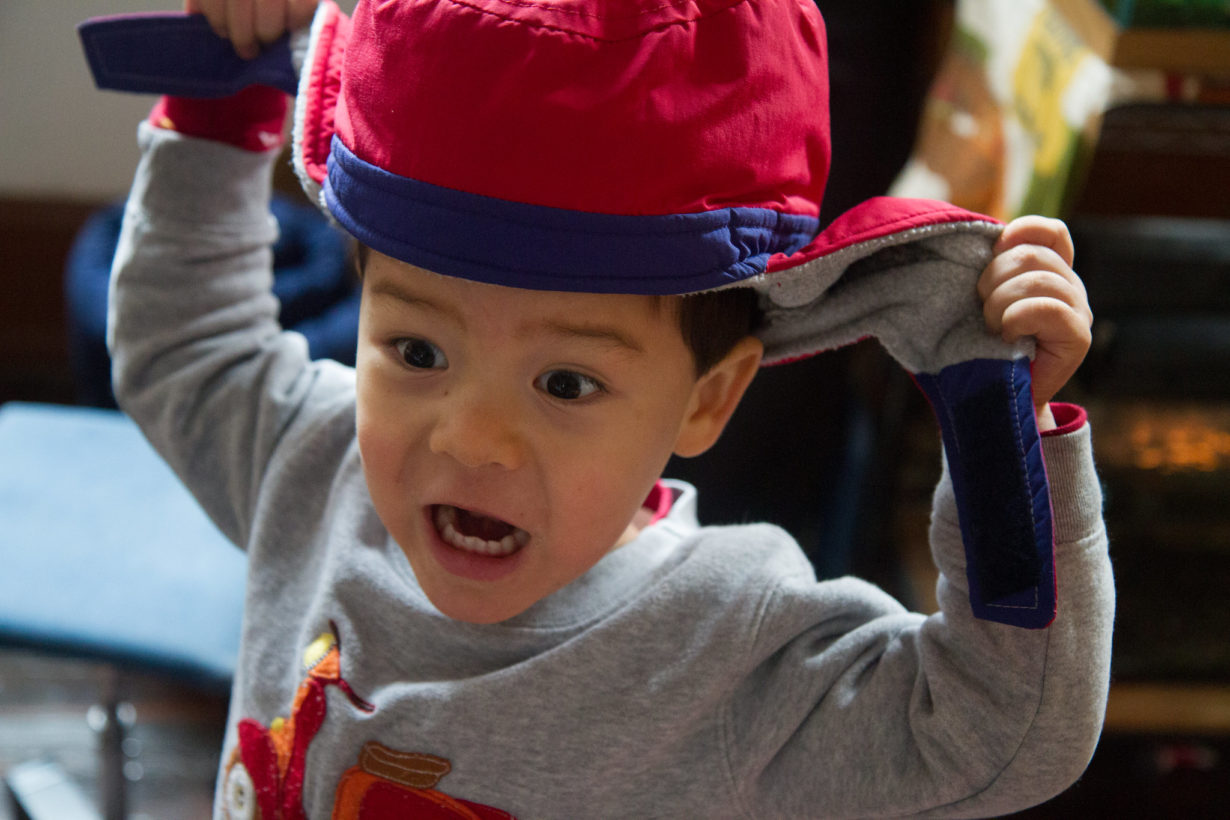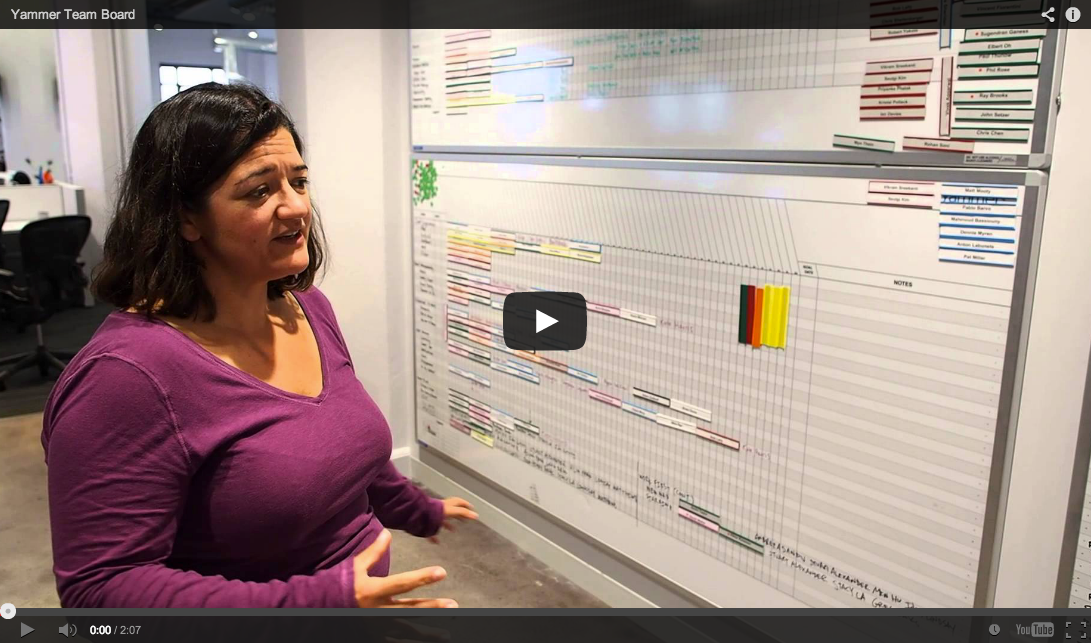

The test of a first-rate intelligence is the ability to hold two opposed ideas in mind at the same time and still retain the ability to function. One should, for example, be able to see that things are hopeless and yet be determined to make them otherwise.
—F. Scott Fitzgerald, The Crack Up (1936)
My mentor, Doug Engelbart, was a visionary and a doer. When he first embarked on his career as an engineer in the 1950s, only a handful of computers existed — expensive behemoths controlled by stacks of punched cards. Doug had the audacity to envision a world where everybody had access to computers, where they could engage with these devices in real-time using graphical, interactive displays, and where all of these machines were connected to each other.
His ideas were so far-fetched, he spent the next 20 years battling detractors and disdain. That didn’t stop him from making his vision a reality, which he unveiled in 1968 at an event that would later become known as the Mother of All Demos. While he wowed everyone in the room that day, it turned out he was still yet another 20 years ahead of his time, as the technologies he demonstrated that day didn’t become widespread until the late 1980s.
Doug permanently instilled in me the importance of thinking big… then thinking even bigger. Thinking big requires thinking long-term, because big things take time.
But he also showed me that whatever you imagined also had to be realistic. As crazy as Doug’s vision for computing seemed to be in the 1950s, he knew it was possible. His ideas around display technology came directly from his experiences as a radar engineer in the Navy during World War II. Furthermore, he had spent some time studying the rate at which computing technology had been advancing — Moore’s Law a quarter of a century before Gordon Moore had articulated it as such — and he knew that it would be a matter of time before scaling effects would make computing technology both powerful enough and affordable. “A matter of time” happened to be four decades, a long time for sure, but well within the realm of possibility.
Finding the right balance between big and possible is the essential challenge of effective visioning. Doing it well requires the ability to shift back and forth between radically different perspectives without getting dizzy and losing your orientation. The challenge for practitioners is figuring out ways to support this dance between big-picture thinking and cold, hard pragmatism.
None of this is easy.
Getting Real
Last year, I helped support an innovation process for Forward Together, an amazing social justice organization based in Oakland. I led a cohort of staff and funders through a four-month Collaboration Muscles & Mindsets training in preparation for the actual experimentation process, which was led by Rebecca Petzel.
Rebecca kicked off the process with a two-day workshop, where participants rapidly brainstormed and refined ideas. We invited several guests who brought different perspectives and helped stretch what our cohort had previously thought was possible. This resulted in lots of energy, inspiration, and great, creative ideas. Everyone was in high spirits after the first day and a half.
Then Rebecca told the participants it was time to get real. She put up several large, poster-sized calendars, and she asked people to get out their personal calendars so that we could flesh out the plan for testing the ideas.
As people looked through their calendars, you could see their shoulders slump and their spirits deflate. Everyone was busy, and they were having trouble seeing how any followup would be possible. One person after another voiced this same concern loudly and clearly. It was like an avalanche of negativity.
I was taken aback. I had expected folks to get real, but I had not expected complete demoralization. After a very low-energy discussion, Rebecca and I huddled about what to do next. I had been scheduled to review some of the muscles and mindsets work we had done, especially for those in the room who hadn’t participated, but I wanted to scrap the exercise. “They need more time to work through the roadmap,” I argued.
“They need to review the mindsets and all the work they’ve done the past four months,” insisted Rebecca. “It will remind them of what’s possible.”
Rebecca was right. The first step in my Muscles & Mindsets program is for the participants to identify a core set of productive mindsets that they aspire to have, as well as the corresponding less productive mindsets that they want to shift. As it turned out, four of the five shifts they had chosen seemed to apply to this exact scenario:
Feeling stuck
“I’m scared of the unknown and would prefer to avoid it.” |
⇒ |
Innovation
“When I walk into the unknown, I’m going to learn and grow. I don’t know what the answers are, but I’ll figure them out by trying things.” |
Not enough time
“I don’t have time for anything more than what’s in front of me.” |
⇒ |
Slow down to speed up
“Slowing down will help me make better choices and save time.” |
Fixed reality
“There aren’t enough time or resources.” |
⇒ |
Flexible reality
“If we think outside the box, we’ll see ways to create time and resources. To do that, we need to be conscious of power and equity.” |
Me
“Everything depends on me.” |
⇒ |
We
“We’re in it together. I don’t always have to be out in front. I need to be compassionate with myself so that I can be supportive of others.” |
Reviewing these helped our participants become viscerally aware of how quickly they had snapped back to the very mindsets they had been working hard to shift. That relieved some of the anxiety, and we were able to end the workshop on a strong, hopeful note. Still, it was a stark reminder of how simply bringing people together and giving them an inspiring, one-off experience is not sufficient to move people on an ongoing basis, especially when faced with everyday realities.
Stretching the Rubber Band
My friend and colleague, Kristin Cobble, is skilled at getting people to a hopeful place and supporting them in staying there, and she strongly influenced how I approach visioning. In addition to sharing many specific techniques, Kristin introduced me to Robert Fritz’s rubber band metaphor, which has become a central principle for how I think about this work.
In short, a powerful vision is both inspiring and grounded. Think of it as two poles: Where you currently are and where you want to be (the vision). Fritz asks that you imagine a rubber band stretched between those two poles. The goal is to create just enough tension so that you feel pulled along by the vision. If the aspiration is too wild, the rubber band will stretch too far and snap. If it is too conservative, then the rubber band will lie there, limp.
Most visioning processes fail in one of two places:
- They don’t find the right tension in the first place.
- They don’t support you in maintaining that tension.
How do you find that right tension?
It starts by being specific, both about where you are and where you want to go. One of my favorite tricks, courtesy of Kristin, is to specify how far forward you want to look, then have you write down your age in that year. You can’t get more specific or grounded than that!
Another trick is to start with vision, then work backwards. Two of my mentors, Gail and Matt Taylor, have been harnessing group genius for almost a half century, and they’ve formulated a set of helpful axioms along the way. Their first two axioms are:
- The future is rational only in hindsight.
- You can’t get there from here, but you can get here from there.
In other words, articulate a clear vision, assume that it is true and that you are currently living in it, and work backwards. Tell the history of how you got to the future (getting from there to here), a process called backcasting. Working backwards in this way results in greater specificity and also helps you gut-check your vision. There’s also good research that shows that grounding your vision in this way makes it more actionable.
In a similar vein, Danny Spitzberg of Peak Agency recently shared a powerful trick that he uses with the Goals / Success Spectrum. After he has people articulate minimum, target, and epic success, he asks people to assign a dollar amount to each column designating what they think the cost is for achieving that success. Nothing grounds a conversation better than talking about money. Not only does it help surface different assumptions about costs, it helps people get real about what it will take to achieve different goals, which helps people adjust their rubber band accordingly.
How do you support others in maintaining the tension of their rubber bands?
This is the harder problem, one that has been driving much of my work for the past three years. Most of the time, spending a few days with a group articulating a clear vision and finding the right initial tension is not enough. Worse, it can be demoralizing and even destructive if there isn’t any followthrough.
Maintaining tension requires an ongoing practice of reflection and adjustment. One way to support this is to make sure the vision is captured somewhere accessible, so that people can find it and remind themselves of it constantly. This may sound obvious, but I am amazed at how often people seem to skip this step.
Another way to support this tension is to build in accountability structures. For example, build in time in standing meetings to revisit and check in on the vision. Assign accountability partners, or even hire coaches.
Creating a grounded, compelling vision is hard. Living into it is harder. One of the most powerful ways to support this tension is to acknowledge that it’s hard, to talk openly about what falling down looks like, and to expect that you will fall down often in pursuit of your vision. At our Forward Together workshop last year, Rebecca’s instincts to revisit the mindsets reminded our participants of how challenging this work was, and it enabled them to re-calibrate their rubber bands.
Celebration and Community
I first met Doug in 1998, 30 years after the Mother of All Demos, and I started working with him two years later. At the time, he had a corner office at Logitech headquarters in Fremont, California. To get there, you had to walk past rows and rows of cubicles, each of which had a computer — usually with a web browser open — and a mouse.
The first time I met him there, I asked him what it felt like to walk past those cubicles every day and to see his creations on every desk.
He looked at me sadly, and he answered immediately. “It feels like failure.”
Interactive, networked computing was only a tiny part of Doug’s vision. What he actually cared about was a world where people lived in harmony with each other and the planet. He saw, in the 1950s, that we were moving in the opposite direction, because our challenges were getting harder faster than our ability to grapple with them. He thought he could stem that by creating tools that would help people get smarter collectively. He did exactly that, but it took a lot longer than he expected, and there was a lot more work that needed to happen. Even though he lived in a world where many of his 30-year old inventions were more or less ubiquitous, people seemed to have missed the point of why he had created all of those tools in the first place.
Doug was depressed for most of the time I knew him (he passed away in 2013), and he spoke often about how he was a failure. That didn’t stop him from his single-minded pursuit of his vision, but it also didn’t seem very productive.
Moreover, I most certainly did not agree with his assessment. I was never a very nurturing, feel-good type of person, but I was always good at voicing my opinions. “You have to look at two things,” I would tell him, “Where we are now, and where you think we would have been if you had not done the work you had done. Furthermore, if you insist that we have a collective responsibility to change the way we are, then you cannot beat yourself up individually for our collective inability to do so.”
I wasn’t the only person to say these sorts of things to him, and I don’t think any of us ever swayed him or made him feel better. But while he remained stubbornly self-critical, he always took delight in the tiny, practically inconsequential victories of the many, many, many people who were inspired and touched by him.
I learned so many things about the importance of vision from working with Doug, but maybe the most important lesson is the one with which I continue to grapple: Celebration and community are critical to maintaining the right tension. If this work is so hard that you will fall down many times, then every time you get up is cause for celebration. Recognizing and doing this effectively is an art, one that is made infinitely easier with the support of others.
Brooking Gatewood, who is both a poet and a skilled practitioner, recently shared these wonderful words from Wendell Berry’s essay, “Poetry and Marriage: The Use of Old Forms,” which I found both beautiful and apt:
There are, it seems, two muses: the Muse of Inspiration, who gives us inarticulate visions and desires, and the Muse of Realization, who returns again and again to say ‘It is yet more difficult than you thought.’ This is the muse of form…. It may be then that form serves us best when it works as an obstruction, to baffle us and deflect our intended course. It may be that when we no longer know what to do, we have come to our real work and when we no longer know which way to go, we have begun our real journey. The mind that is not baffled is not employed. The impeded stream is the one that sings.







